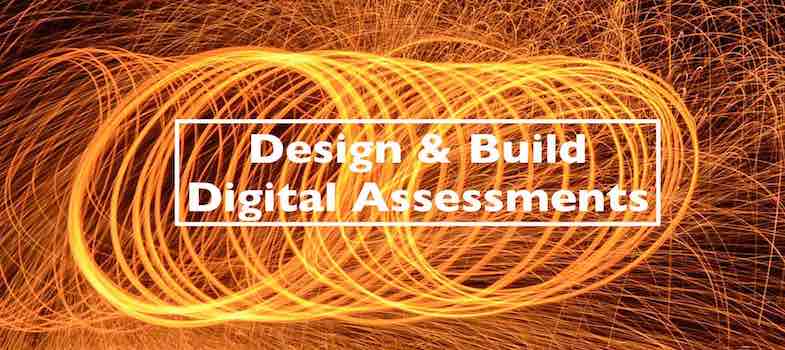1. Getting Started: Readings
8. Why change? Some benefits of e-assessment
There are a lot of good reasons for adopting e-assessment. Below are some examples that mix both traditional and innovative pedagogical approaches together with the use of technology (this may also be useful as a prompt list to use in the design phase of your work). In the list below you can also see example of assessment for learning rather than just of learning (i.e. purely summative). In the design section of this toolkit you will find a list of typical e-assessment tools and some of their typical and potential uses. Once you get thinking about this the list of advantages is practically endless:
Reduction in the use of paper for traditional assessment task such as essays and reports e.g. by going digital and using a simple VLE assignment submission ‘Dropbox’. This also brings potential advantages to help streamline and speed up assessment methods.
Students do not have to travel to the college to hand in the paper assignment (especially useful for those at work or at a distance)
Printing costs for students reduced
Automatic proof of submission
Work is safely stored and harder to lose
Students can receive electronic reminders about deadlines
Deadlines not governed by office hours or the working week
Not having to pick up carry and manage large piles of paper and folders
Increased speed, accuracy and consistency of marking
Being able to reuse common feedback and comments
Being able to make comments and feedback that are as long as needed (not limited by paper space) and clear of handwriting issues
Not having to decipher poor student handwriting
Students not having to decipher poor lecturer handwriting
Potential to add audio, video and graphical feedback
A big one, for lecturers, potentially. The ability to work from home or different locations when setting up, marking and providing feedback to students
Quicker, richer, better and more consistent student feedback on formative and summative assessments (critical for learning) e.g. by the use of a VLE and a rubric
Reducing marking workloads and coping with larger student cohorts e.g. by the use of a VLE and rubrics or by the use of objective / MCQ style testing
The ability for lecturers to virtually collaborate at a distance in order to assess students work and provide feedback to students – good for inter college collaborative course and even for international collaborations.
Supporting deeper learning by asking students to create short explanations of key subject area knowledge and skills for their peers and getting them to mark each other’s work using the assessment criteria. Then harvest the best to use as future learning resources e.g. by posting to a discussion board and discussing them and marking them there.
Support deeper learning and course engagement and provide feedback on course design by getting the students to explain what they think the learning outcomes mean e.g. by posting to a discussion forum or blog. This gets the students to focus on the course and how they approach the assessments.
Prepare students for assessment by getting them to mark and provide feedback on previous student work (anonymised) and then reveal the actual marks and feedback e.g. by use of the VLE and discussion board and rubrics
Improves existing paper-based assessments that currently work poorly and disadvantage some students.
Evaluate knowledge and skills in areas that are expensive / dangerous to do using current methods in labs / workshops / building sites / etc. e.g. via drag and drop interactive tests, scenarios, simulations etc.
Evaluate complex skills and practices e.g. by the use of an e-Portfolio that contains templates specifying the evidence that students have to generate to meet the outcomes
Provide immediate ‘real-time’, feedback e.g. by the use of objective / MCQ style testing and / or simulations
Support for collaborative learning e.g. by using an online discussion forum and getting students to peer assess / critique each other’s work or by joint authoring of reports and presentations that are submitted online
Assessing complex skills like problem-solving, decision making and testing hypotheses, which are more authentic to future work experiences e.g. by group working through questions on case studies in a discussion forum, using simulations etc.
Providing richer activities (authentic work based scenarios) that can lead to improved student engagement and potentially improved student performance e.g. by the use of case studies and linked objective / MCQ testing or simulations or game playing
Provide more engaging assessments and encourage the development of observation and analysis skills e.g. by providing short videos / case studies that do not include the conclusion and ask the students ‘what happened next and why?’ e.g. through video clips located in the VLE and the use of discussion boards
Increasing flexibility in the approach, format or timing of an assessment, without time or location constraints.
Assessment on demand – as is the case with many professional and vocational qualifications – individuals may be fast tracked depending on the results
Integrating formative and summative judgments by making both assessment and instruction simultaneous e.g. by using objective / MCQ style testing and / or simulations that include rich feedback that can include short video clips from teachers / experts
